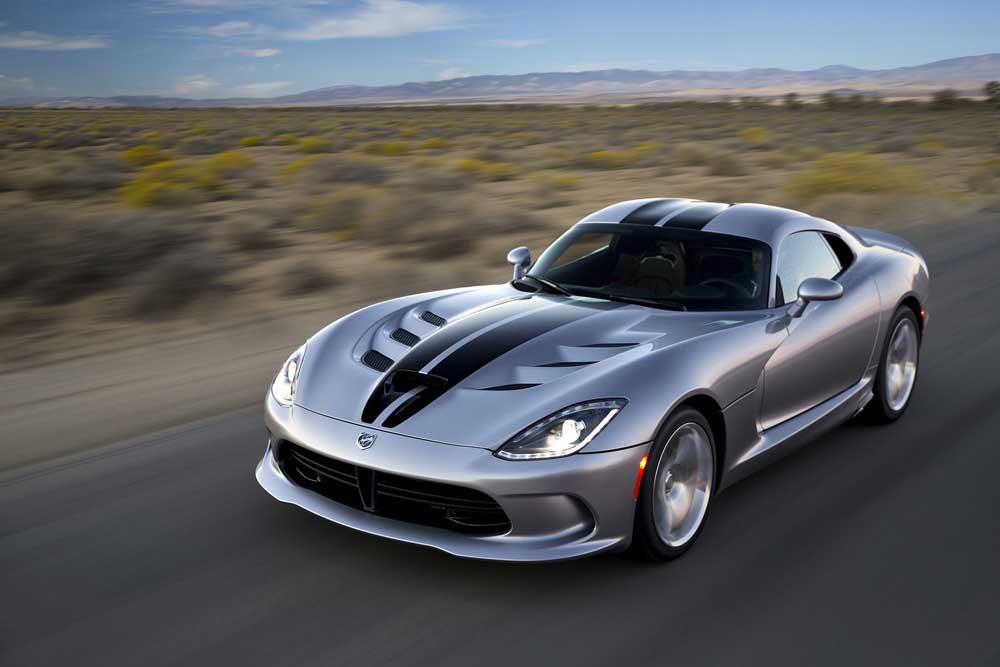Viper gives reason to celebrate
Published 12:00 am Sunday, June 21, 2015

- Richard Prince / Courtesy Dodge via Tribune News ServiceIf you’re looking for a fun, fast blast from the past, the 2015 Dodge Viper will not disappoint.
Forget politically correct.
In these silent tweet-and-text times, the brash, brutal Dodge Viper bellows down the street like some sort of satanic delivery.
Five-star safety rating? Good fuel economy? Environmentally sensitive?
Who cares? Each morning, I swore I could hear hints of the apocalypse rolling darkly from the Viper’s giant 10-cylinder engine.
As you may recall, Chrysler killed off the Viper in 2008 in the midst of its bankruptcy, silencing a brash, gas-guzzling two-seat sports/muscle car rooted in the ’60s.
Then, in a surprising blast from the past, unpredictable Chrysler plucked the Viper from its grave in 2010, even adding some refinement in 2013.
We should celebrate its existence daily: The Viper may be the last production sports car as mean and violent and wildly impractical as the old Shelby 427 Cobras that inspired it.
Just don’t bring your digital devices to the party. You’ll be plenty busy with other pressing concerns in the blazing, elemental Viper — like surviving.
Nothing I’ve driven sounds, looks or acts like a Viper, today’s Big Snake.
Low, wide and nicely curvaceous, the dark blue 2015 Viper GTS I had recently possessed almost cartoonish proportions.
A seriously long hood and strong, flowing front fenders presented a great face, embellished with headlamps that looked a bit like snake eyes.
Meanwhile, a graceful power bulge in the center of the hood and exhaust vents on either side of it announced that something big and really nasty lived beneath it.
One of the Viper’s best features was a deep exhaust vent recessed into the back side of its front wheelwells.
For even more dash and effect, the 200-mph Viper wears a low, pinched top with two slight bubbles in it to create a little more headroom.
With a scant 5.1 pounds per horsepower, the tire-spinning, suspension-jarring Viper accelerates to 60 in 3.4 seconds, according to Car and Driver, and is wilder than a 700-horsepower Challenger Hellcat.
At slow speeds, the lumpy-idling Viper felt hot-rod sleepy to me, as if it had been designed and tuned for life in the fast lane.
But once the tach swung past 2,500 rpm, the engine swelled in intensity like a ferocious late-spring thunderstorm.
Hard, jarring wheelspin began at about 30 in first gear with the clutch out, continuing well into second at 50 or 60.
Under really hard acceleration, the Viper sounded sort of like a flame-spitting World War II fighter plane chasing a really angry bear.
Like many old muscle cars, the Viper had a springy clutch with a lot of travel complementing a positive, long-throw shifter. They were a pleasure when I could pull myself off the seat long enough to grab a gear.
Unlike sports/muscle cars from the past, though, the Viper rips around corners and curves with astounding grace.
Its body remained absolutely flat, and that wide front-end turned so aggressively into bends that it tended to distort 60-something faces. For some reason, I crawled out looking — temporarily, I’m sure — like a grandfather.
Needless to say, I suppose, the Viper didn’t speak “soft.” Its ride swung from agitated and acceptable to fairly awful, depending on the surface.
If you expect more in something costing $122,000, you should probably consider a Corvette or a Porsche.
But the Viper did get a pretty decent interior in 2013 — though it’s still somewhat tight and cramped.
The black interior in mine, for example, had a swoopy dashboard covered in a thin layer of leather. Large, round, contemporary-looking gauges occupied the instrument panel, and an 8.4-inch display screen held most of the middle of the dash.
Low-mounted black-leather bucket seats offered supportive bolsters, white stitching and patterned centers.
Storage space was mostly nonexistent, though Vipers do now have cupholders.
The car makes absolutely no sense. But if you love loud, bold, highly engaging vehicles, the Big Snake will charm you.






